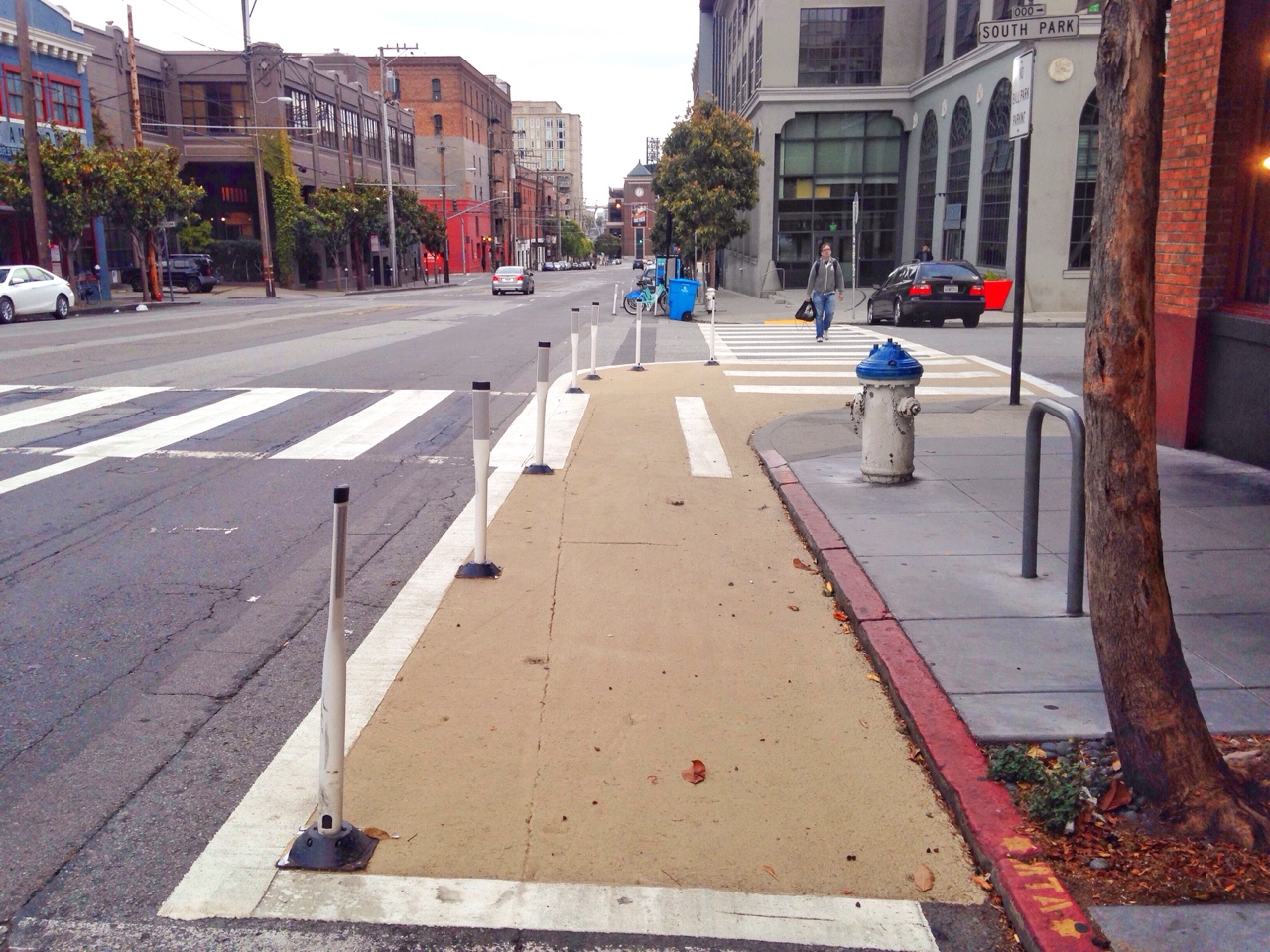Painted Safety Zones
You may have seen intersections on Howard, Polk and 6th streets with a khaki-colored painted area and flexible white posts that wrap around the sidewalk corner.
We call these new treatments “painted safety zones” – they’re cheap, effective and easy-to-implement, and make a big improvement for pedestrian safety.

Painted safety zones increase pedestrian safety in three ways by:
- Creating more distance between turning vehicles and pedestrians waiting on the sidewalk
- Encouraging vehicles to turn more slowly
- Maintaining good visibility between drivers and people stepping into the crosswalk
We are installing painted safety zones on the city’s pedestrian high-injury network, where just 6 percent of city streets account for 60 percent of pedestrian injuries and fatalities.
The most common type of collision painted safety zones are aimed at preventing is when a car makes a fast turn and strikes someone in the crosswalk.
Since these are new to city streets, it’s important to know what painted safety zones are not:
- They aren’t an extension of the sidewalk; and
- They aren’t a space for pedestrians to linger before crossing the street
Painted safety zones are one of the elements we are quickly installing to improve safety in support of our Vision Zero goal of eliminating all traffic deaths. By the end of 2015, we estimate that San Francisco will have painted safety zones at approximately 40 intersections.
Other painted safety measures you’ll see more of on San Francisco streets include daylighting and zebra-striped crosswalks. Since 2013, we’ve nearly doubled the number of painted safety measures on our streets to increase safety immediately while longer-term, more complex engineering efforts are in development.
